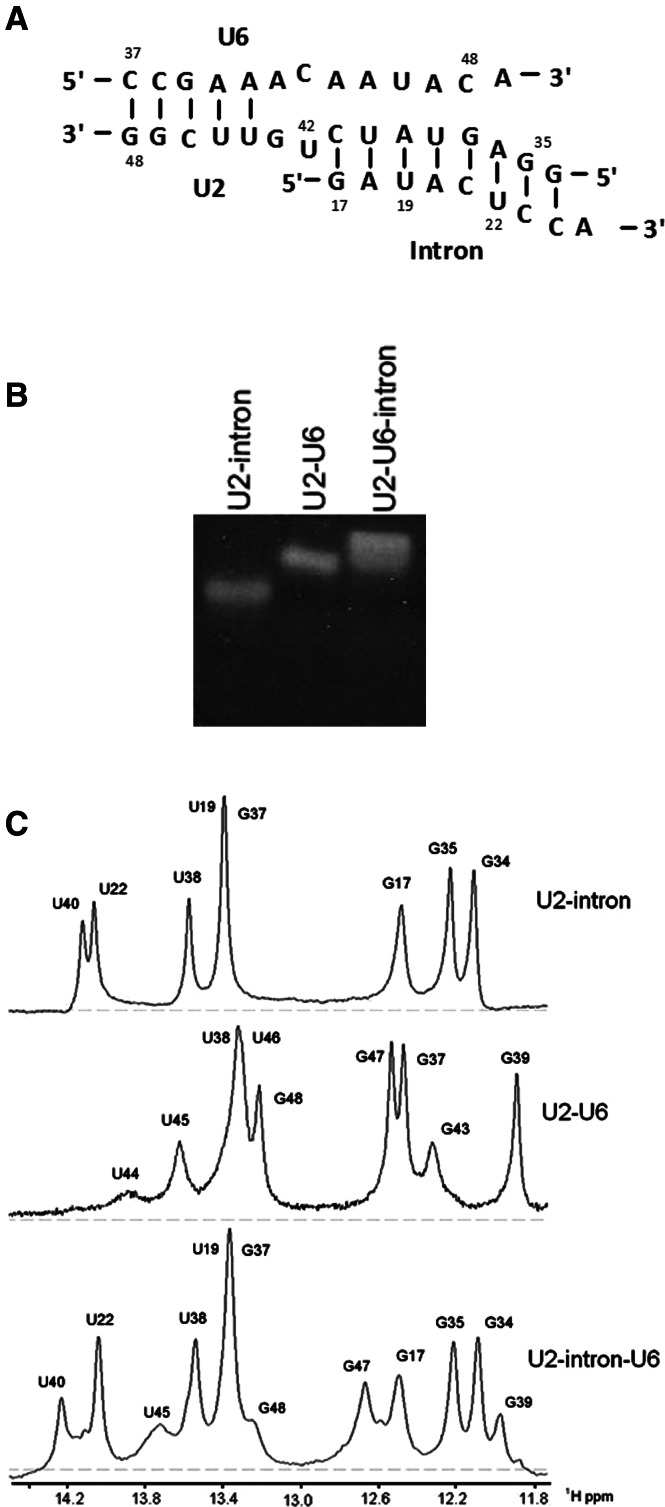FIGURE 4.
(A) Pairing of fragments of U2 and U6 snRNAs and an intron oligomer representing the proposed Helix III interaction. Results of NMR studies (panel C of this figure) indicate that part of the U2-U6 Helix III dissociates in the presence of the intron, and the U2-intron pairing predominates in the three-strand complex. (B) Nondenaturing gel demonstrating the pairing of U2, U6 snRNA, and intron oligomers representing the branch site helix and Helix III. Components electrophoresed in each lane are labeled above the gel. (C) Imino 1H region of one-dimensional spectra of exchangeable protons of the strands depicted in panel A to study the (1) U2-intron duplex (Newby and Greenbaum 2001), (2) U2-U6 duplex, and (3) U2-intron-U6 complex. Eight imino resonances observed in the spectra of the U2-intron are also observed in the spectrum of the U2-intron-U6, consistent with unperturbed U2-intron pairing in the complex. Four imino resonances attributed to the U2-U6 duplex are observed in the spectra of the U2-intron-U6 complex; three terminal G-C base pairs that were added to stabilize U2-U6 interaction and the adjacent A-U base pair are detected in the spectra of the three-strand complex. These data suggest that U6 does not interact with the U2-intron in the vicinity of the proposed Helix III.

